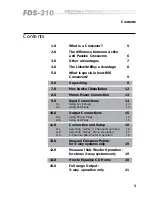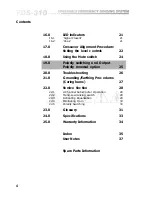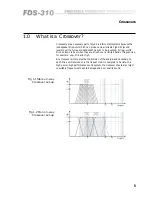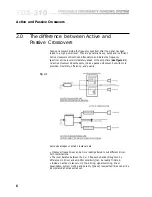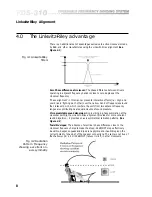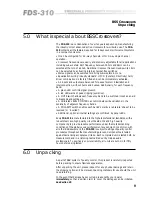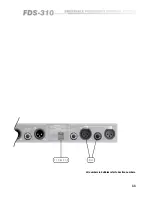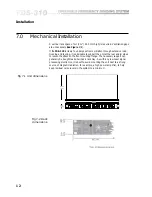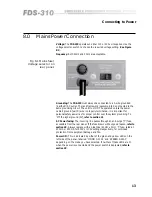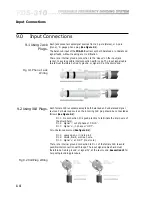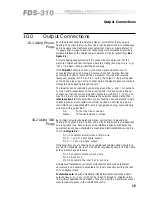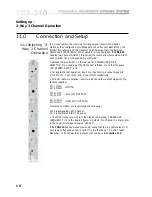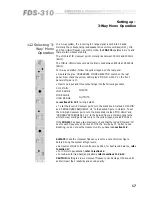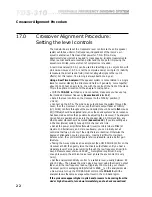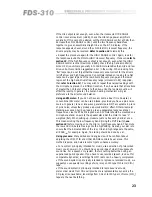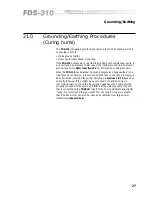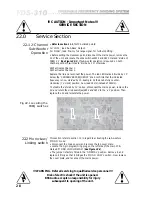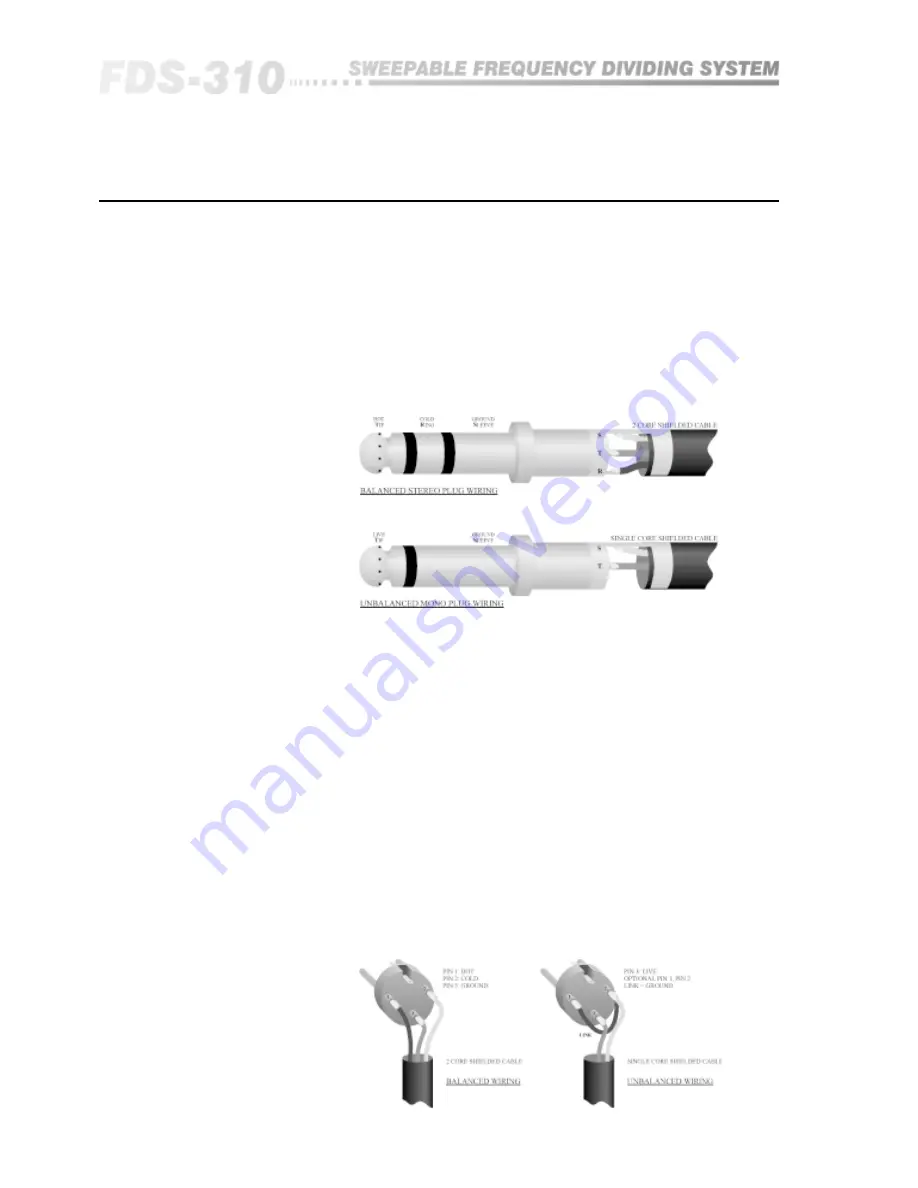
1 4
Input Connections
9.0
Input Connections
Each jack socket accepts signal sources from a 3-pole (stereo), or 2-pole
(mono), 'A' gauge phone plug (
See Figure 9.1
).
The balanced input of the
FDS-310
will accept both balanced or unbalanced
signal feeds, without needing any modification.
There is no internal ground connection to the 'sleeve' on the input jack
socket, to avoid possible interconnection earth loops. The input signal cable
shield
must
therefore be tied to ground, or signal 0V, at the source end.
9.1 Using Jack
Plugs.
Fig 9.1 Phone Jack
Wiring
Fig 9.2 XLR Plug Wiring
Each female XLR receptable accepts both balanced and unbalanced signal
sources. For balanced sources, the incoming XLR plug should be connected as
follows (
See Figure 9.2
):
Pin 1: No connection (it is good practice to terminate the drain wire of
the shield here).
Pin 2: Signal '-', out of phase or 'COLD'.
Pin 3: Signal '+', in phase or 'HOT'.
For unbalanced sources (
See figure 9.2
):
Pin 1: Leave open, or link to pin 2.
Pin 2: Shield, braid, or screen wire.
Pin 3: Signal '+' or 'HOT' (inner core).
There is no internal ground connection to Pin 1 of the female XLR to avoid
possible interconnection earth loops. The input signal cable shield
must
therefore be tied to ground, or signal 0V, at the source end.
See section 21
for
help with grounding procedure.
9.2 Using XLR Plugs.
Summary of Contents for FDS 310
Page 1: ...1 FDS 310 User Manual ...
Page 10: ...1 0 Getting to know the FDS 310 Fig 6 1 Front Panel Fig 6 2 Rear Panel ...
Page 11: ...11 All numbers in bubbles refer to Section numbers ...
Page 37: ...37 User Notes ...
Page 38: ...3 8 User Notes ...
Page 39: ...39 User Notes ...
Page 40: ...4 0 User Notes ...



